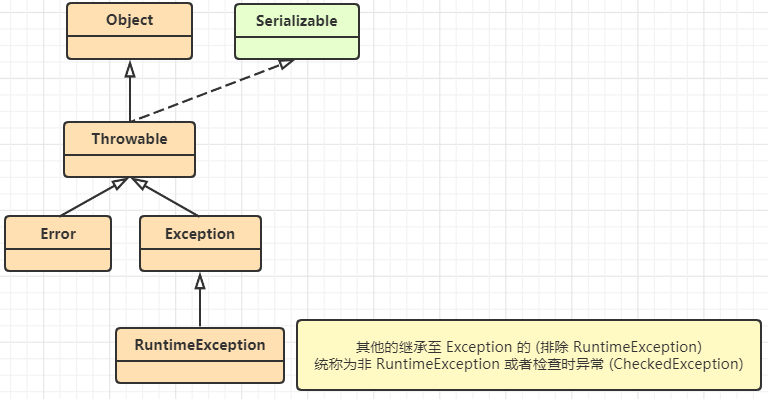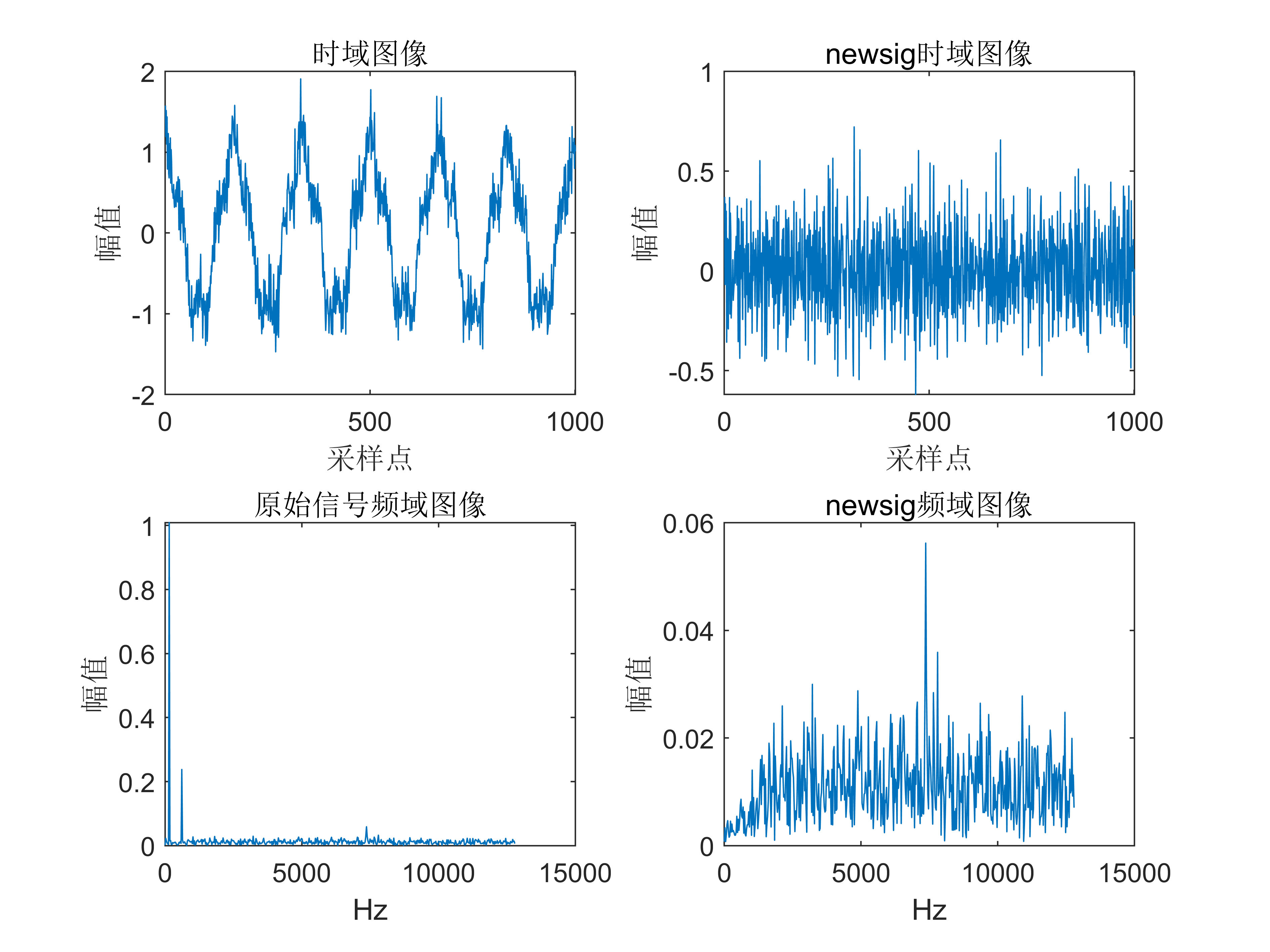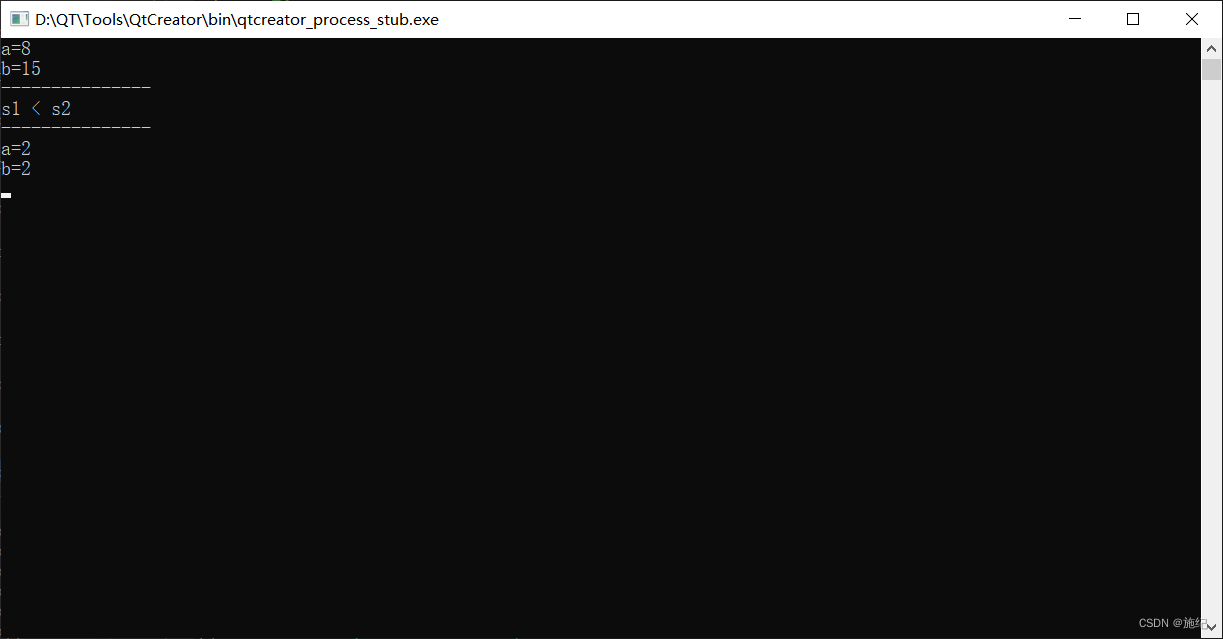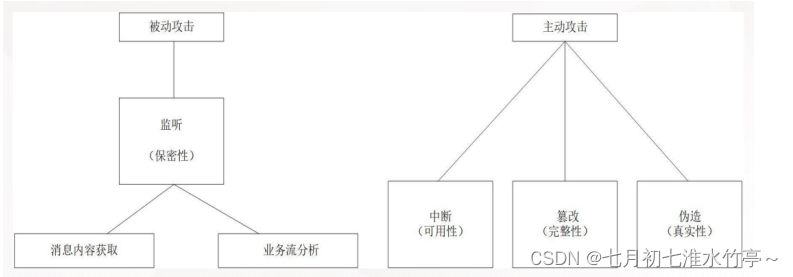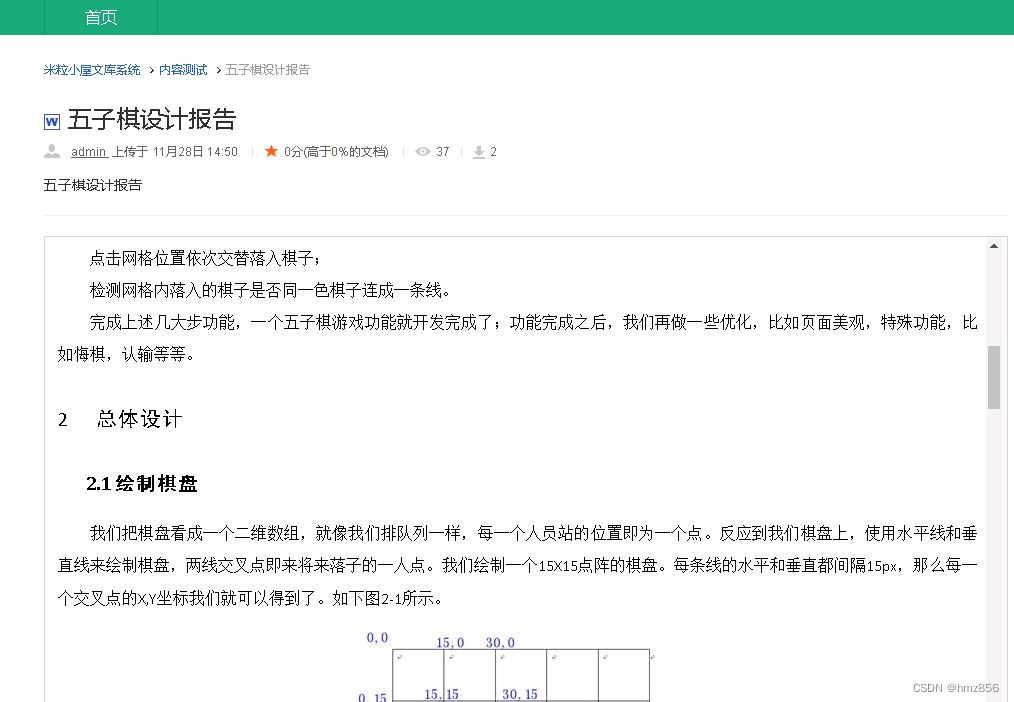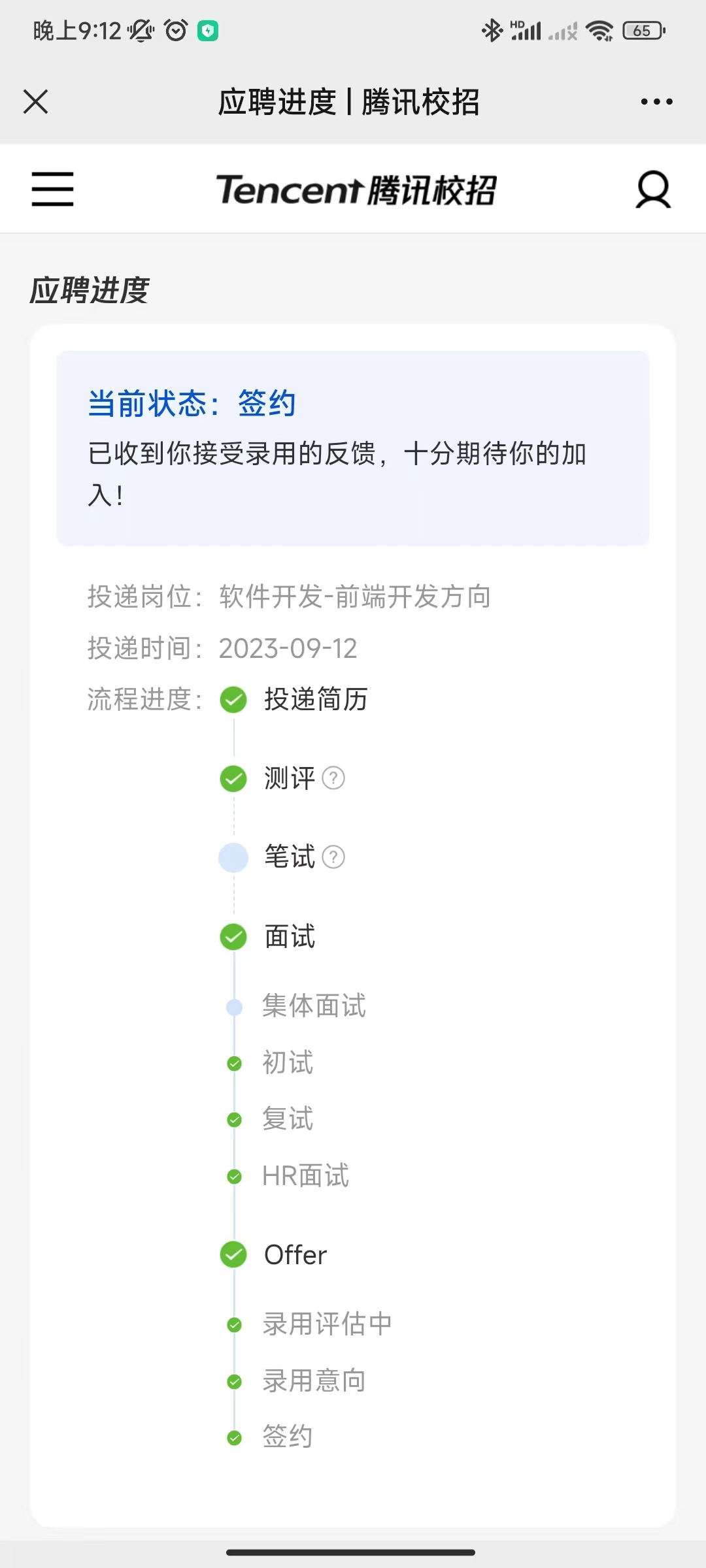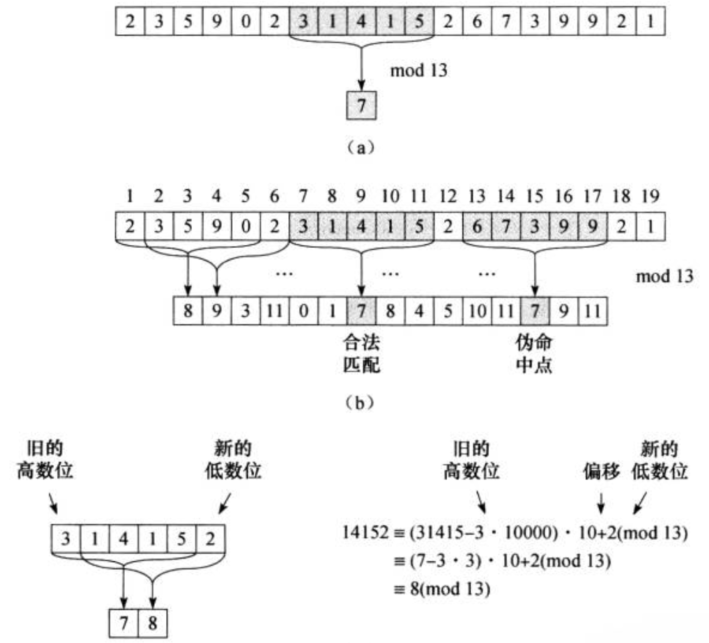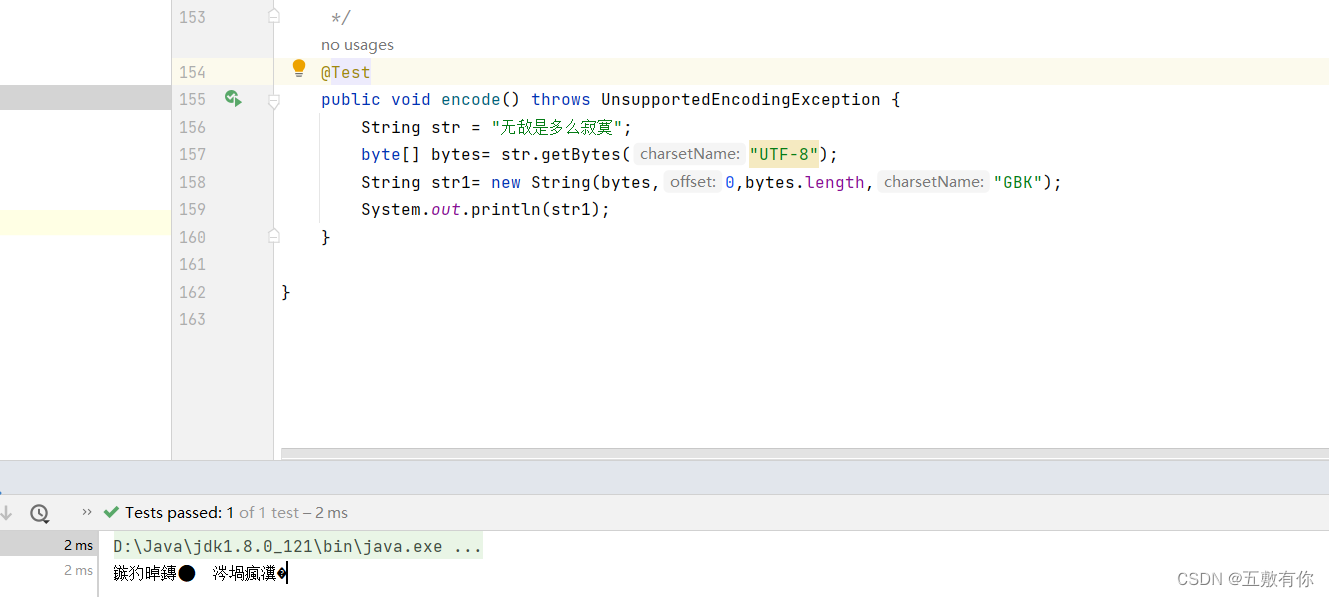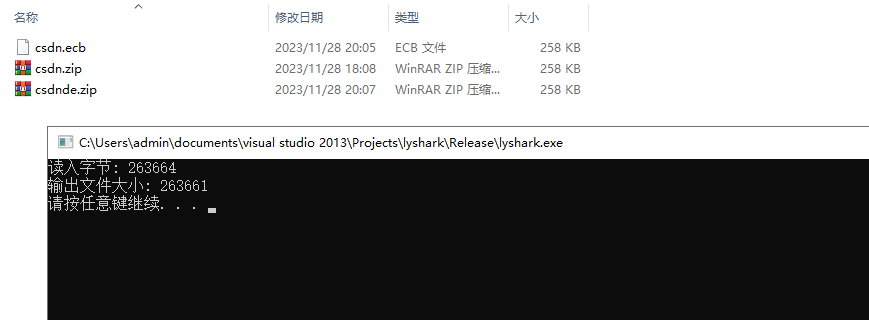多线程
6 线程同步
“多个线程操作同一个资源”
处理多线程问题时,多个线程访问同一个对象,并且某些线程还想修改这个对象,这时候就需要线程同步。线程同步其实就是一种等待机制,多个需要同时访问此对象的线程进入这个对象的等待池形成队列,等待前面的线程使用完毕,下一个线程再使用。
-
并发:同一个对象被多个线程同时操作
-
队列和锁
由于同一进程的多个线程共享同一块存储空间,在带来方便的同时,也带来了访问冲突问题,为了保证数据在方法中被访问时的正确性,在访问时加入锁机制synchronized,当一个线程获得对象的排它锁,独占资源,其他线程必须等待,使用后释放锁即可。存在以下问题:
- 一个线程持有锁会导致其他所有需要此锁的线程挂起;
- 在多线程竞争下,加锁、释放锁会导致比较多的上下文切换和调度延时,引起性能问题;
- 如果一个优先级高的线程等待一个优先级低的线程释放锁,会导致优先级倒置,引起性能问题。
【三大不安全案例】
- 买票案例
package com.duo.synchronize;//不安全案例1:买票
public class UnsafeCase1 {public static void main(String[] args) {BuyTicket station = new BuyTicket();new Thread(station, "Hua").start();new Thread(station, "Ming").start();new Thread(station, "Hong").start();}
}class BuyTicket implements Runnable {private int ticketNum = 10;boolean flag = true;@Overridepublic void run() {while (flag) {buy();}}private void buy() {if (ticketNum <= 0) {flag = false;return;}try {Thread.sleep(1000);} catch (InterruptedException e) {e.printStackTrace();}System.out.println(Thread.currentThread().getName() + "抢到了第" + ticketNum-- + "张票");}
}
运行结果:
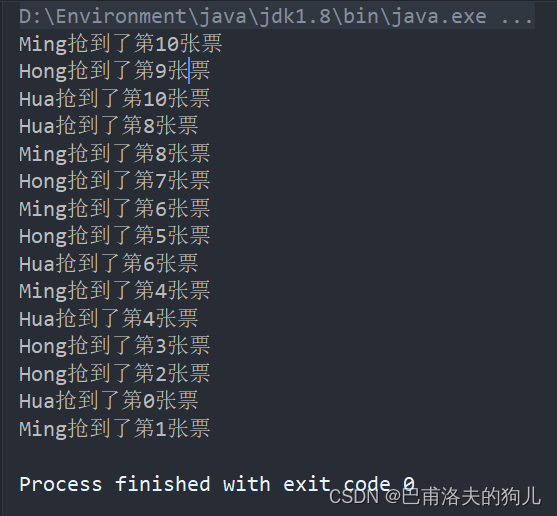
可以发现,由于线程不安全(没有让三个线程“排队”买票),会出现同时抢到同一张票的情况。而且也可能会出现买到编号为-1的票:
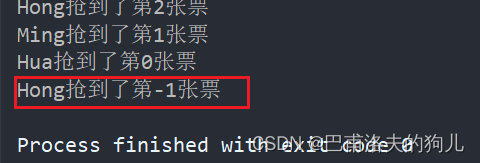
- 银行取钱案例
package com.duo.synchronize;//银行两人同时取钱
public class UnsafeCase2 {public static void main(String[] args) {Account account = new Account(1_000_000, "基金");Withdraw husband = new Withdraw(account, 500_000, "丈夫");Withdraw wife = new Withdraw(account, 1_000_000, "妻子");husband.start();wife.start();}
}class Account {int balance;String name;public Account(int balance, String name) {this.balance = balance;this.name = name;}
}class Withdraw extends Thread {Account account; //账户int transaction; //交易金额int change; //现在手中的零钱总金额public Withdraw(Account account, int transaction, String name) {super(name);this.account = account;this.transaction = transaction;}//取钱@Overridepublic void run() {if (account.balance - transaction < 0) {System.out.println(Thread.currentThread().getName() + "账户余额不足,交易失败");return;}try {Thread.sleep(1000);} catch (InterruptedException e) {e.printStackTrace();}account.balance -= transaction;change += transaction;try {Thread.sleep(1000);} catch (InterruptedException e) {e.printStackTrace();}//Thread.currentThread().getName() == this.getName()System.out.println(this.getName() + "手中当前金额:" + change);System.out.println(account.name + "账户当前余额为:" + account.balance);}
}
运行结果:

可以看出,”基金“账户中原本总共只有1000000,丈夫与妻子都在此账户中取钱,前者取了500000,后者取了1000000,按理来说,账户当前余额应不足以两人同时取出并输出"账户余额不足,交易失败",但运行结果显示基金账户当前余额为-500000,这是由于丈夫取完500000之后账户余额为500000,在此之前妻子线程启动时经过首步判断账户当前余额满足交易条件,故代码会继续向下运行并执行取钱操作,所以500000-1000000=-500000.
此外,代码中额外添加的sleep()放大了此问题的发生性。
- 线程不安全的集合
package com.duo.synchronize;import java.util.ArrayList;
import java.util.List;//不安全案例3:线程不安全的集合
public class UnsafeCase3 {public static void main(String[] args) {List<String> list = new ArrayList<String>();for (int i = 0; i < 5000; i++) {new Thread(() -> {list.add(Thread.currentThread().getName());}).start();}try {Thread.sleep(1000);} catch (InterruptedException e) {e.printStackTrace();}System.out.println(list.size());}
}
运行结果:

可以看到,最终输出的list集合大小并非5000。这是因为存在两个线程操作了集合同一位置的情况,故而集合总的元素个数就会减少。
